- Home
- Robin Cook
Outbreak dmb-1
Outbreak dmb-1 Read online
Outbreak
( Dr. Marissa Blumenthal - 1 )
Robin Cook
Murder and intrigue reach epidemic proportions when a devastating plague sweeps the country. Dr. Marissa Blumenthal of the Atlanta Centers for Disease Control investigates—and soon uncovers the medical world’s deadliest secret…
Robin Cook
OUTBREAK
For my mother, Audrey, who ultimately is responsible for all this.
Prologue
Zaire, Africa
September 7, 1976
A TWENTY-ONE-YEAR-OLD Yale biology student by the name of John Nordyke woke up at dawn at the edge of a village north of Bumba, Zaire. Rolling over in his sweat-drenched sleeping bag, he stared out through the mesh flap of his nylon mountain tent, hearing the sounds of the tropical rain forest mixed with the noises of the awakening village. A slight breeze brought the warm, pungent odor of cow dung permeated with the acrid aroma of cooking fires. High above him he caught glimpses of monkeys skittering through the lush vegetation that shielded the sky from his view.
He had slept fitfully, and as he pulled himself upright, he was unsteady and weak. He felt distinctly worse than he had the night before, when he’d been hit by chills and fever an hour or so after dinner. He guessed he had malaria even though he’d been careful to take his chloroquine phosphate as prophylaxis against it. The problem was that it had been impossible to avoid the clouds of mosquitoes that emanated each evening from the hidden pools in the swampy jungle.
With a hesitant gait, he made his way into the village and inquired about the nearest clinic. An itinerant priest told him that there was a Belgian mission hospital in Yambuku, a small town located a few kilometers to the east. Sick and frightened, John quickly broke camp, stuffed his tent and sleeping bag into his backpack and set out for Yambuku.
John had taken a six-month leave from college to photograph African animals, such as the highland gorilla, which were threatened by extinction. It had been his boyhood dream to emulate the famous nineteenth-century explorers who had originally opened the Dark Continent.
Yambuku was scarcely larger than the village he’d just left, and the mission hospital did not inspire confidence. It was no more than a meager collection of cinder-block buildings, all in dire need of repair. The roofs were either rusting corrugated metal or thatched like the native huts, and there seemed no signs of electricity.
After checking in with a nun, swathed in traditional attire, who spoke only French, John was sent to wait among a throng of natives in all states of debility and disease. Looking at the other patients, he wondered if he wasn’t likely to catch something worse than what he already had. Finally he was seen by a harried Belgian doctor who could speak a little English, though not much. The examination was rapid, and as John had already surmised, the diagnosis was a “touch” of malaria. The doctor ordered an injection of chloroquine and advised John to return if he didn’t feel better within the next day or so.
The examination over, John was sent into the treatment room to wait in line for his injection. It was at that point that he noticed the lack of aseptic technique. The nurse did not have disposable needles but merely rotated one of three syringes. John was certain that their short stay in the sterilizing solution was not nearly long enough to render them germ-free. Besides, the nurse fished them out of the fluid with her fingers. When it became his turn, he was tempted to say something, but his French was not fluent enough, and he knew he needed the medicine.
During the next few days, John was glad that he’d been silent since he soon was feeling better. He stayed in the Yambuku area, occupying himself by photographing the Budza tribesmen. They were avid hunters and eager to demonstrate their prowess to the blond foreigner. By the third day John was preparing to recommence his journey up the Zaire River, following Henry Stanley’s footsteps, when his health took a rapid turn for the worse. The first thing he noticed was a violent headache, followed in rapid succession by chills, fever, nausea and diarrhea. Hoping it would pass, he took to his tent and shivered through the night, dreaming of home with clean sheets and a bathroom down the hall. By morning he felt weak and dehydrated, having vomited several times in the darkness. With great difficulty, he got his things together and made his way slowly to the mission hospital. When he arrived in the compound, he vomited bright red blood and collapsed on the clinic floor.
An hour later he woke in a room occupied by two other patients, both suffering from drug-resistant malaria.
The doctor, the same man who’d examined John on his previous visit, was alarmed by the severity of John’s condition and noted some curious additional symptoms: a strange rash over his chest and small surface hemorrhages in his eyes. Although the doctor’s diagnosis was still malaria, he was troubled. It was not a typical case. As an added precaution, he decided to include a course of chloramphenicol in case the boy had typhoid fever.
September 16, 1976
Dr. Lugasa, District Health Commissioner for the Bumba region, glanced out the open window of his office at the expanse of the Zaire River as it shimmered in the morning sunlight. He wished it was still called the Congo with all the mystery and excitement that name invoked. Then, forcing his mind back to work, he looked again at the letter he’d just received from the Yambuku Mission Hospital concerning the deaths of an American male, one John Nordyke, and of a visiting farmer from a plantation near the Ebola River. The mission doctor claimed that their deaths had been caused by an unknown infection that spread rapidly; two patients housed with the American, four members of the planter’s household who’d been caring for the farmer, and ten of the clinic’s outpatients had come down with severe cases of the same illness.
Dr. Lugasa knew that he had two choices. First, he could do nothing, which was undoubtedly the wisest choice. God knew what kind of rampant endemic diseases there were out there in the bush. His second option was to fill out the bewildering array of official forms reporting the incident to Kinshasa where someone like himself, but higher on the bureaucratic ladder, would probably decide it was prudent to do nothing. Of course Dr. Lugasa knew that if he elected to fill out the forms, he would then be obligated to journey up to Yambuku, an idea that was particularly odious to him at that particularly damp, hot time of year.
With a twinge of guilt, Dr. Lugasa let the onionskin letter slip into the wastebasket.
September 23, 1976
A week later Dr. Lugasa was nervously shifting his weight from one foot to the other as he watched the aged DC-3 aircraft land at the Bumba airport. First out was Dr. Bouchard, Dr. Lugasa’s superior from Kinshasa. The day before, Dr. Lugasa had telephoned Dr. Bouchard to inform him that he’d just received word that a serious outbreak of an unknown disease was in progress in the area around the Yambuku Mission Hospital. It was affecting not only the local inhabitants, but the hospital staff as well. He had not mentioned the letter he’d received some seven days before.
The two doctors greeted each other on the tarmac and then climbed into Dr. Lugasa’s Toyota Corolla. Dr. Bouchard asked if there was any more news from Yambuku. Dr. Lugasa cleared his throat, still upset about what he’d learned that morning from the wireless. Apparently eleven of the medical staff of seventeen were already dead, along with one hundred and fourteen villagers. The hospital was closed since there was no one well enough to run it.
Dr. Bouchard decided that the entire Bumba region had to be quarantined. He quickly made the necessary calls to Kinshasa and then told the reluctant Dr. Lugasa to arrange transportation for the next morning so they could visit Yambuku and assess the situation firsthand.
September 24, 1976
The following day when the two doctors pulled into the deserted courtyard of the Yambuku Mission Hospital they were greeted by an ee
rie stillness. A rat scampered along the balustrade of an empty porch, and a putrid odor assaulted their senses. Holding cotton handkerchiefs over their noses, they reluctantly got out of the Land Rover and gingerly looked into the nearest building. It contained two corpses, both beginning to decay in the heat. It wasn’t until they’d peered into the third building that they found someone still alive, a nurse delirious with fever. The doctors went into the deserted operating room and put on gloves, gowns and masks in a belated attempt to protect themselves. Still fearful for their own health, they tended to the sick nurse and then searched for more of the staff. Among nearly thirty dead, they found four other patients barely clinging to life.
Dr. Bouchard radioed Kinshasa and requested emergency aid from the Zairean Air Force to airlift several patients from the mission hospital back to the capital. But by the time the infectious disease department at the university hospital was consulted about how to isolate the patients during transport, only the nurse still lived. Isolation techniques would have to be excellent, Bouchard pointed out, because they were obviously dealing with a highly contagious and very deadly disease.
September 30, 1976
The Belgian nurse airlifted to Kinshasa died at 3:00 A.M. despite six days of massive supportive therapy. No diagnosis was made, but after the autopsy, samples of her blood, liver, spleen and brain were sent to the Institut de Médicine Tropical in Antwerp, Belgium; to the Centers for Disease Control in Atlanta, U.S.A.; and to the Microbiological Research Establishment in Porton Down, England. In the Yambuku area there were now two hundred ninety-four known cases of the illness, with a fatality rate of approximately ninety percent.
October 13, 1976
The Yambuku virus was isolated almost simultaneously at the three international laboratories. It was noted to be structurally similar to the Marburg virus, first seen in 1967 in a fatal outbreak in laboratory workers handling green monkeys from Uganda. The new virus, considerably more virulent than Marburg, was named Ebola after the Ebola River north of Bumba. It was thought to be the most deadly microorganism seen since the bubonic plague.
November 16, 1976
Two months after the initial outbreak, the unknown disease in Yambuku was considered successfully contained since no new cases had been reported in the area for several weeks.
December 3, 1976
The quarantine of the Bumba region was lifted and air service reinstated. The Ebola virus had evidently returned to its original source. Where that source was remained a complete mystery. An international team of professionals, including Dr. Cyrill Dubchek of the Centers for Disease Control who had played a big role in localizing the Lassa Fever virus, had scoured the area, searching for a reservoir for the Ebola virus within mammals, birds, and insects. The virologists had no success whatsoever. Not even a clue.
Los Angeles, California
January 14
Present Day
Dr. Rudolph Richter, a tall, dignified ophthalmologist originally from West Germany, and cofounder of the Richter Clinic in Los Angeles, adjusted his glasses and looked over the advertising proofs laid out on the circular table in the clinic’s conference room. To his right was his brother and partner, William, a business-school graduate, who was examining the proofs with equal attention. The material was for the next quarter’s drive for new prepaid subscribers to the clinic’s health-care plan. It was aimed at young people, who as a group were relatively healthy. That was where the real money was in the prepaid health-care business, William had been quick to point out.
Rudolph liked the proofs. It was the first good thing that had happened to him that day. It was a day that had begun badly with a fender-bender on the entrance to the San Diego freeway, resulting in a nasty dent in his new BMW. Then there was the emergency surgery that had backed up the clinic. Then there was the tragic AIDS patient with some weird complication who’d coughed in his face while he tried to examine the man’s retinas. And on top of everything else, he’d been bitten by one of the monkeys used in his ocular herpes project. What a day!
Rudolph picked up an ad scheduled for the L.A. Times Sunday Magazine. It was perfect. He nodded at William, who motioned for the ad man to continue. The next part of the presentation was a slick thirty-second TV spot slotted for the evening news. It portrayed carefree bikini-clad girls on a Malibu beach, playing volley ball with some handsome young men. It reminded Rudolph of an expensive Pepsi ad, though it extolled the concept of prepaid health maintenance as delivered by an organization like the Richter Clinic in contrast to conventional fee-for-service medicine.
Along with Rudolph and William were a handful of other staff doctors, including Dr. Navarre, Chief of Medicine. They were all directors of the clinic and held small amounts of stock.
William cleared his throat and asked if there were any questions from the staff. There were none. After the advertising people had departed, the group voiced unanimous approval of what had been presented. Then, after a brief discussion about the construction of a new satellite clinic to deal with the increase in subscribers from the Newport Beach area, the meeting was adjourned.
Dr. Richter returned to his office and cheerfully tossed the advertising proofs into his briefcase. It was a sumptuous room, considering the relatively low professional salary he drew as a physician in the group. But his salary was just incidental remuneration compared to the profits from his percentage of the outstanding stock. Both the Richter Clinic and Dr. Rudolph Richter were in sound financial shape.
After catching up on his calls, Dr. Richter made rounds on his own postoperative inpatients: two retinal detachments with difficult medical histories. Both were doing well. On his way back to his office, he thought about how little surgery he was doing as the sole ophthalmologist of the clinic. It was disturbing, but with all the ophthalmologists in town, he was lucky to have what he did. He was thankful that his brother had talked him into the clinic idea eight years ago.
Changing his white coat for a blue blazer and picking up his briefcase, Dr. Richter left the clinic. It was after 9:00 P.M., and the two-tiered parking garage was almost empty. During the day it was always full, and William was already talking about the need to expand it, not only for the spaces but for the depreciation; issues like that Rudolph didn’t truly understand, nor did he want to.
Musing about the economics of the clinic, Dr. Richter was unaware of two men who had been waiting in the shadows of the garage. He remained unaware even after they fell in step behind him. The men were dressed in dark business suits. The taller of the two had an arm that seemed permanently frozen into a flexed position. In his hand was a fat briefcase that he held high due to the immobility of the elbow joint.
Nearing his car, Dr. Richter sensed the footsteps behind him as they quickened in pace. An uncomfortable sensation gripped his throat. He swallowed hard and cast a nervous glance over his shoulder. He caught sight of the two men, who seemed to be coming directly toward him. As they passed beneath an overhead light, Dr. Richter could appreciate that they were carefully dressed, with fresh shirts and silk ties. That made him feel a little better. Even so, he moved more quickly, rounding the back end of his car. Fumbling for the keys, he unlocked the driver’s-side door, tossed in his briefcase, and slid into the welcome smell of coach leather. He started to close the door, when a hand stopped him. Dr. Richter reluctantly raised his eyes to what turned out to be the calm, blank face of one of the men who had followed him. The suggestion of a smile crossed the man’s countenance as Dr. Richter looked at him inquiringly.
Dr. Richter tried again to pull his door shut, but the man held it firmly from the outside.
“Could you tell me the time, doctor?” asked the man politely.
“Certainly,” said Richter, glad to have a safe explanation for the man’s presence. He glanced at his watch, but before he had a chance to speak, he felt himself rudely pulled from the car. He made a half-hearted effort to struggle, but he was quickly overwhelmed and stunned by an open-handed blow to the side of
his face that knocked him to the ground. Hands roughly searched for his wallet, and he heard fabric tear. One of the men said “businessman,” in what sounded like a disparaging tone, while the other said, “Get the briefcase.” Dr. Richter felt his watch yanked from his wrist.
It was over as quickly as it had begun. Dr. Richter heard footsteps recede and a car door slam, then the screech of tires on the smooth concrete. For a few moments he lay without moving, glad to be alive. He found his glasses and put them on, noting that the left lens was cracked. As a surgeon, his primary concern was for his hands; they were the first thing he checked, even before he picked himself up off the ground. Getting to his feet, he began to examine the rest of himself. His white shirt and his tie were smeared with grease. A button was missing from the front of his blazer, and in its place was a small horseshoe-shaped tear. His pants were torn from the right front pocket all the way down to his knee.
“God, what a day!” he voiced to himself, thinking that being mugged made the morning’s fender-bender seem trivial by comparison. After a moment’s hesitation, he recovered his keys and returned to the clinic, going back to his office. He called security, then debated whether to call the L.A. police. The idea of bad publicity for the clinic made him hesitate, and really, what would the police have done? While he argued with himself, he called his wife to explain that he’d be a little later than expected. Then he went into the lavatory to examine his face in the mirror. There was an abrasion over the right cheekbone that was sprinkled with bits of parking-garage grit. As he gingerly blotted it with antiseptic, he tried to estimate how much he had contributed to the muggers’ welfare. He guessed he’d had about a hundred dollars in his wallet as well as all his credit cards and identification, including his California medical license. But it was the watch that he most hated to lose; it had been a gift from his wife. Well, he could replace it, he thought, as he heard a knock on his outer door.

 Shock
Shock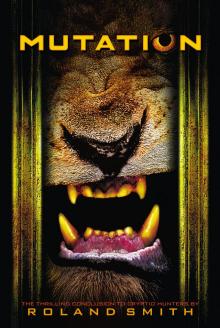 Mutation
Mutation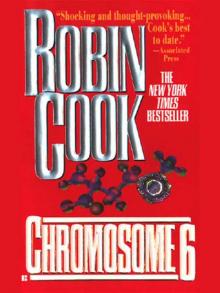 Chromosome 6
Chromosome 6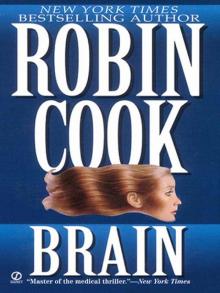 Brain
Brain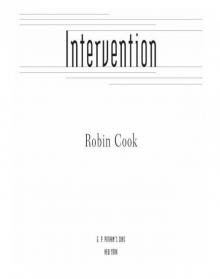 Intervention
Intervention Invasion
Invasion The Legend of Parzival: The Epic Story of His Quest for the Grail
The Legend of Parzival: The Epic Story of His Quest for the Grail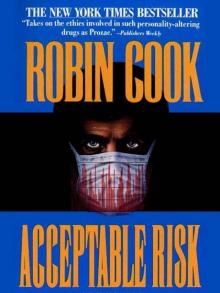 Acceptable Risk
Acceptable Risk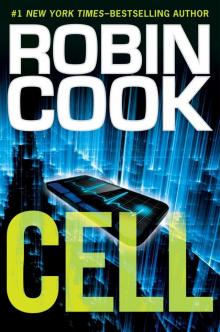 Cell
Cell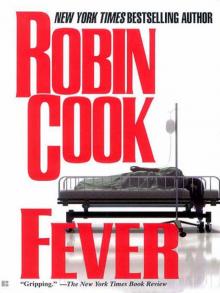 Fever
Fever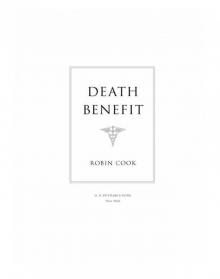 Death Benefit
Death Benefit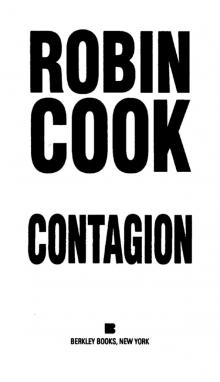 Contagion
Contagion Mindbend
Mindbend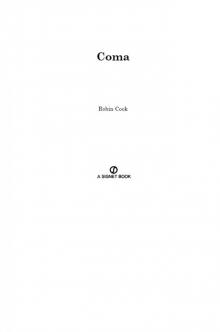 Coma
Coma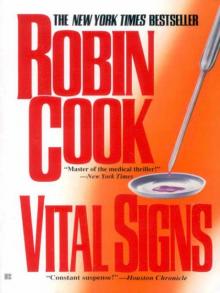 Vital Signs
Vital Signs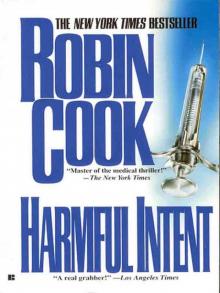 Harmful Intent
Harmful Intent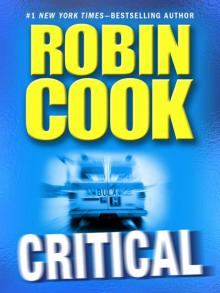 Critical
Critical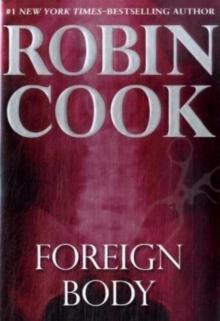 Foreign Body
Foreign Body Marker
Marker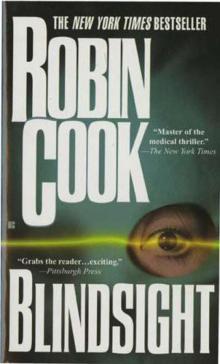 Blindsight
Blindsight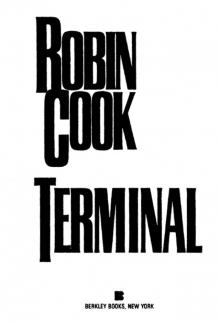 Terminal
Terminal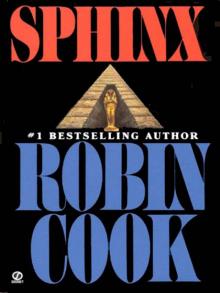 Sphinx
Sphinx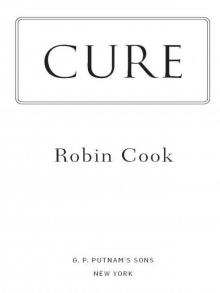 Fatal Cure
Fatal Cure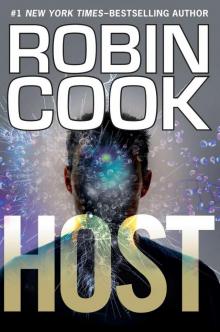 Host
Host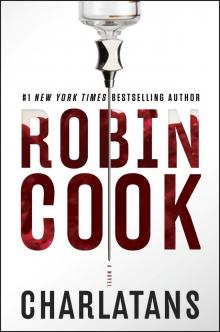 Charlatans
Charlatans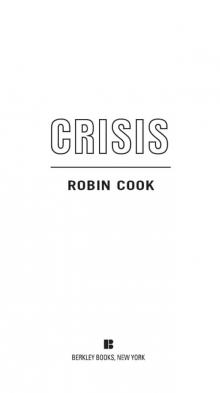 Crisis
Crisis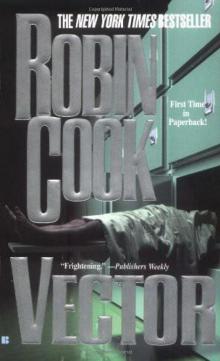 Vector
Vector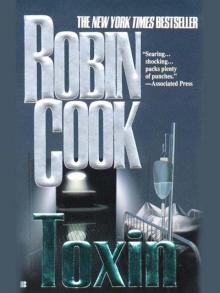 Toxin
Toxin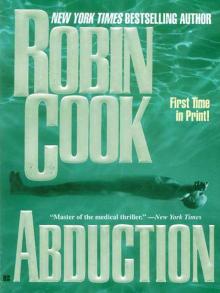 Abduction
Abduction Viral
Viral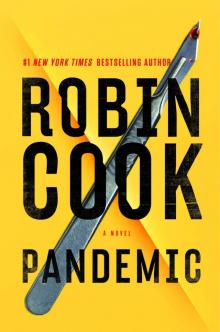 Pandemic
Pandemic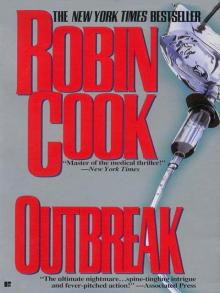 Outbreak
Outbreak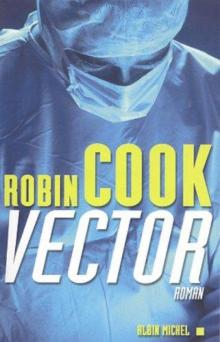 Vector js&lm-4
Vector js&lm-4 Godplayer
Godplayer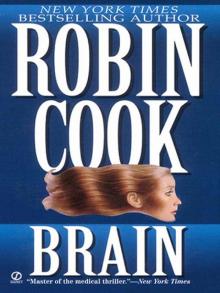 A Brain
A Brain Year of the Intern
Year of the Intern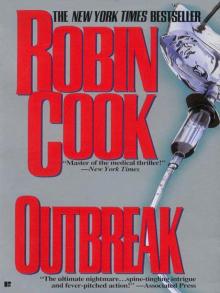 Outbreak dmb-1
Outbreak dmb-1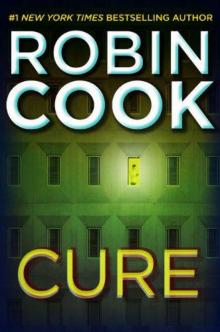 Cure
Cure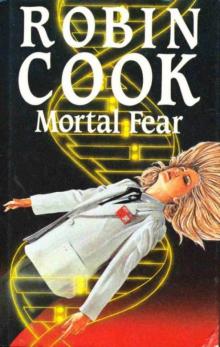 Mortal Fear
Mortal Fear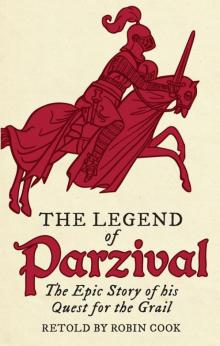 The Legend of Parzival
The Legend of Parzival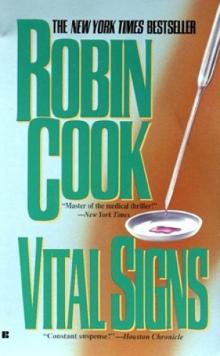 Vital Signs dmb-2
Vital Signs dmb-2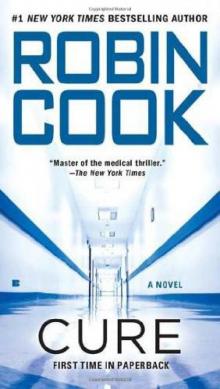 Cure (2010) sam-10
Cure (2010) sam-10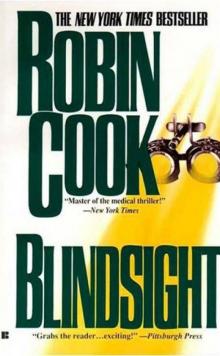 Blindsight sam-1
Blindsight sam-1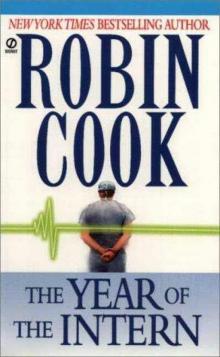 The Year of the Intern
The Year of the Intern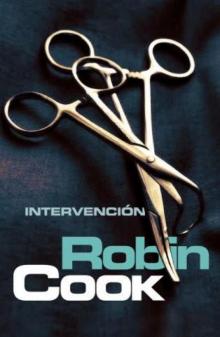 Intervention sam-9
Intervention sam-9 Foreign Body sam-8
Foreign Body sam-8